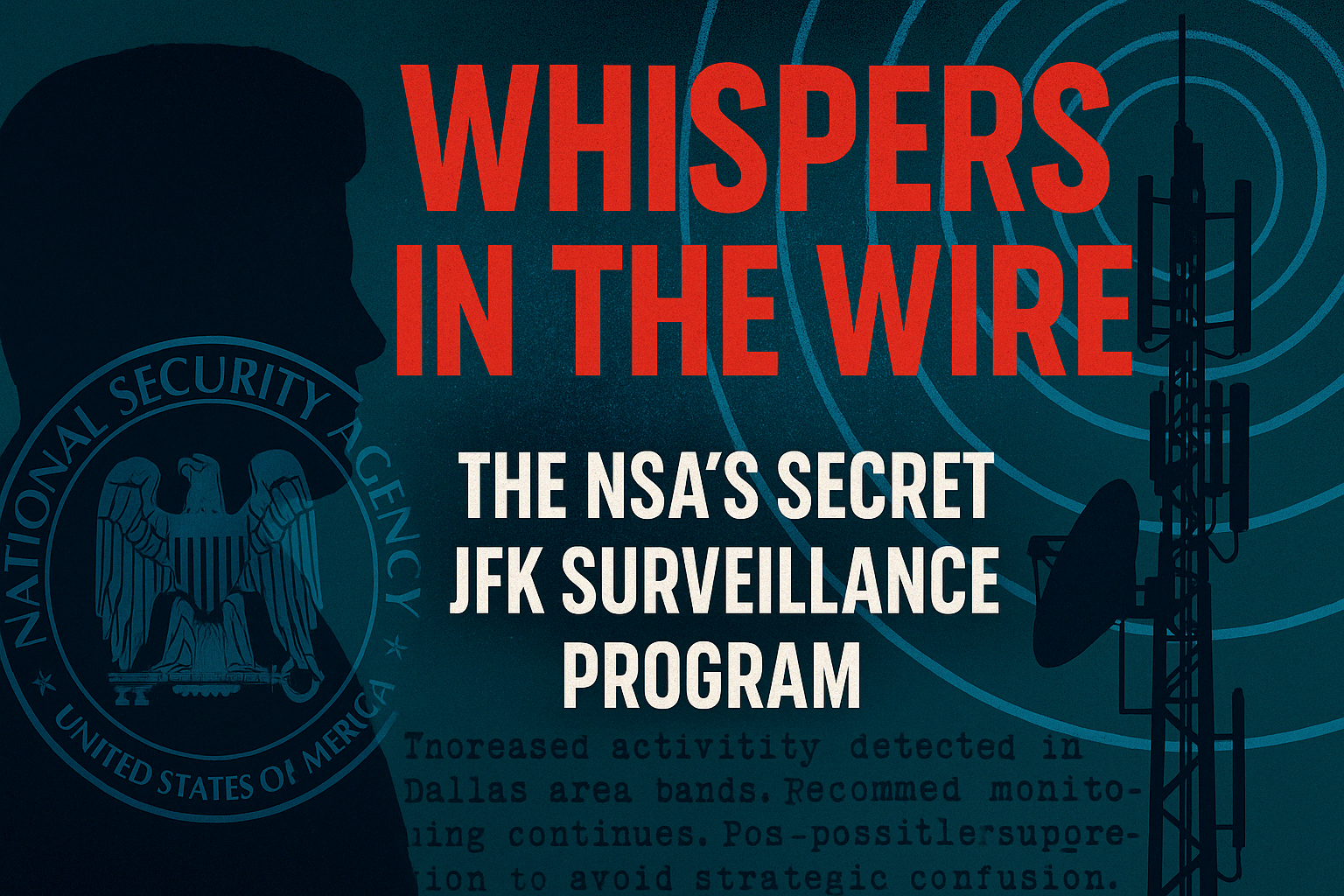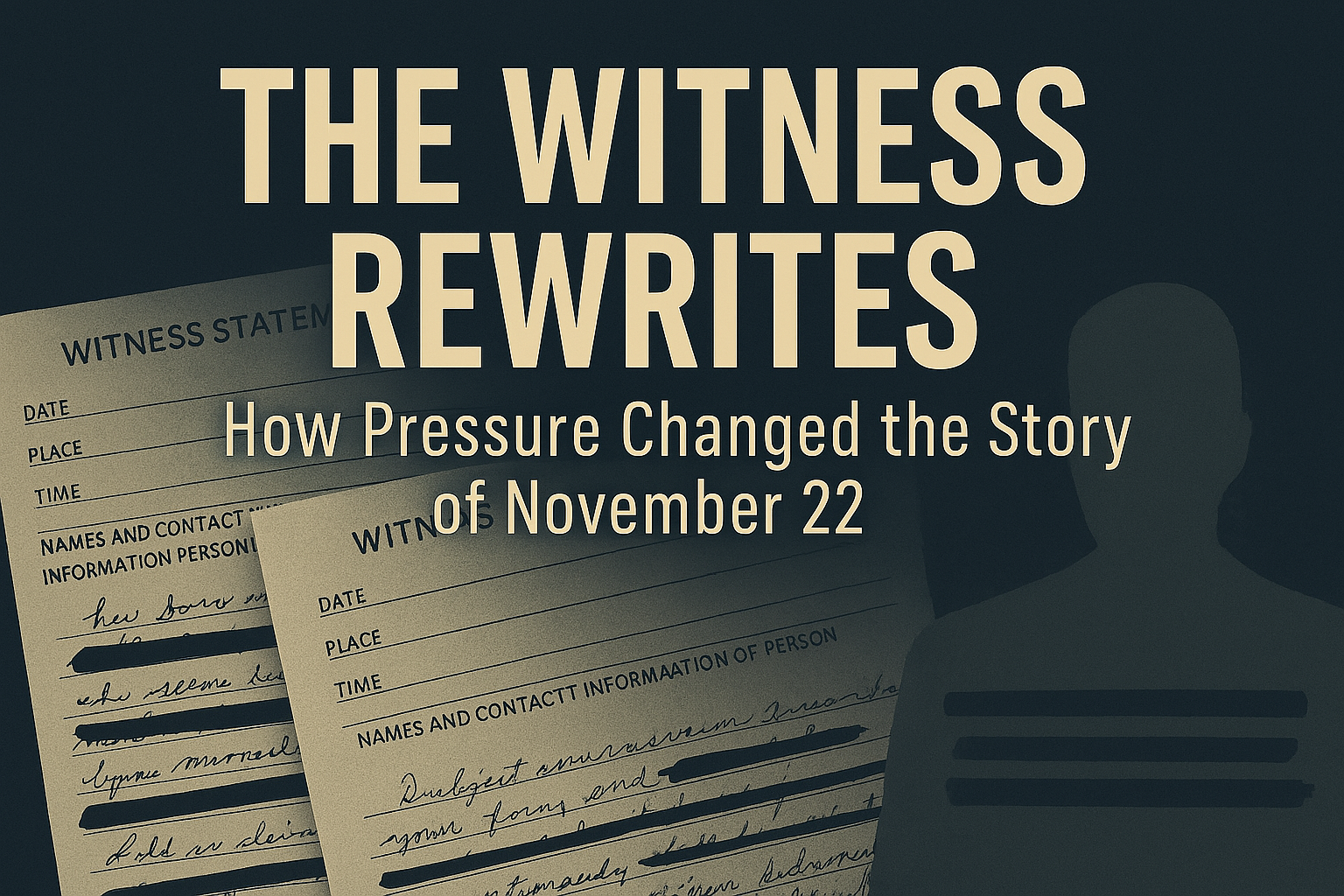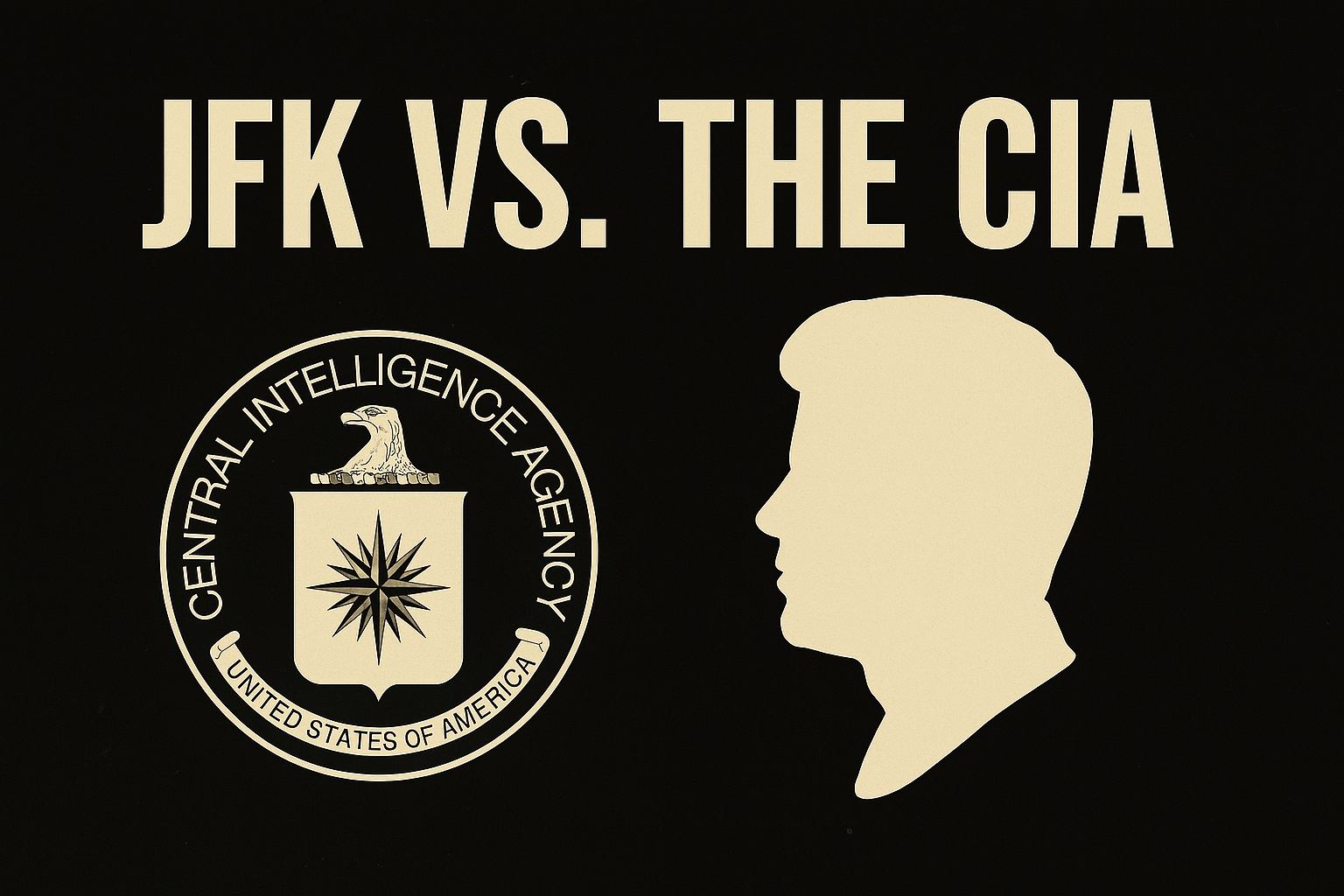“We watched the signal, but lost the man.” - NSA Memo, Nov. 23, 1963
👁️ Hidden in the Static
While the CIA, FBI, and Secret Service have long dominated JFK conspiracy lore, one silent player has gone largely unnoticed: the National Security Agency. Now, newly declassified documents from the 2025 transparency order reveal that the NSA wasn’t just a bystander in the weeks leading up to November 22, 1963 - they were listening.
And they may have heard everything.
📡 Operation SHADOWPLAY
Among the documents released was a reference to Operation SHADOWPLAY, a top-secret signal intercept initiative designed to monitor “subversive chatter” across domestic and foreign radio frequencies. Unlike the CIA, whose involvement has been heavily scrutinized, the NSA kept a low profile, operating under intelligence-sharing exemptions and buried paper trails.
One document, dated November 18, 1963, includes a chilling line:
“Increased activity detected in Dallas area bands. Recommend monitoring continues. Possible foreign relay interference suspected.”
Four days later, Kennedy was dead.
📞 The Call That Vanished
An internal NSA call log shows an outbound communication flagged as “URGENT” to Fort Meade at 12:32 PM CST - just minutes after the assassination.
But the log is redacted.
What’s more, follow-up transcripts between NSA tech staff mention a scrambled intercept transmission believed to originate from an “unauthorized surveillance node” located near Dealey Plaza. That node? Never officially acknowledged.
“Someone else was listening. And they were closer than we were.”
- Internal memo, code-signed “RS-L-4”
🧩 Why Didn’t We Know?
At the time of JFK’s death, the NSA was still in its formative years. Lacking the media exposure of the CIA or FBI, it operated in the dark - and preferred it that way. This secrecy likely allowed key intelligence to be siloed or hidden from Warren Commission investigators.
A newly surfaced report dated Dec 1963, marked “DO NOT DISSEMINATE,” includes the following:
“Review of Dealey intercepts inconclusive. No evidence supporting lone gunman theory derived from radio analysis. Recommend suppression to avoid strategic confusion.”
Strategic confusion? Or deliberate misdirection?
🔍 RF Interference or Intentional Jam?
The most explosive revelation from the SHADOWPLAY files is a declassified technical breakdown from NSA’s Signal Intelligence Analysis Group. Their conclusion? A deliberate signal disruption occurred at 12:30 PM CST in the 2.7GHz band - commonly used by U.S. federal surveillance equipment.
“We didn’t just lose visual contact. We lost the entire electromagnetic picture.”
A cover-up? Or something even bigger?
🤫 The Legacy They Buried
In 1964, one of the SHADOWPLAY engineers, Miles Trent, wrote a letter to his wife (found in his personal effects and declassified last month):
“They told us to burn the tapes. We did. But I can still hear the static.”
He died of an apparent heart attack days after mailing it. The letter was intercepted. It never reached his wife.
Until now.



